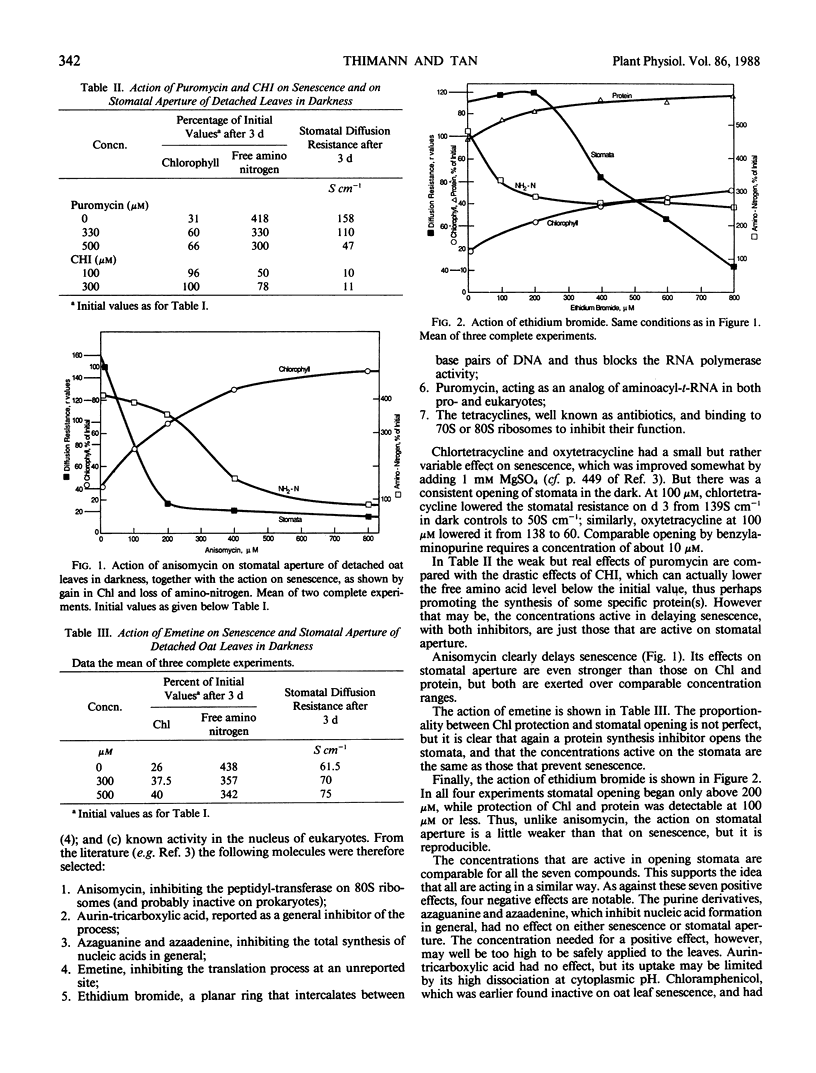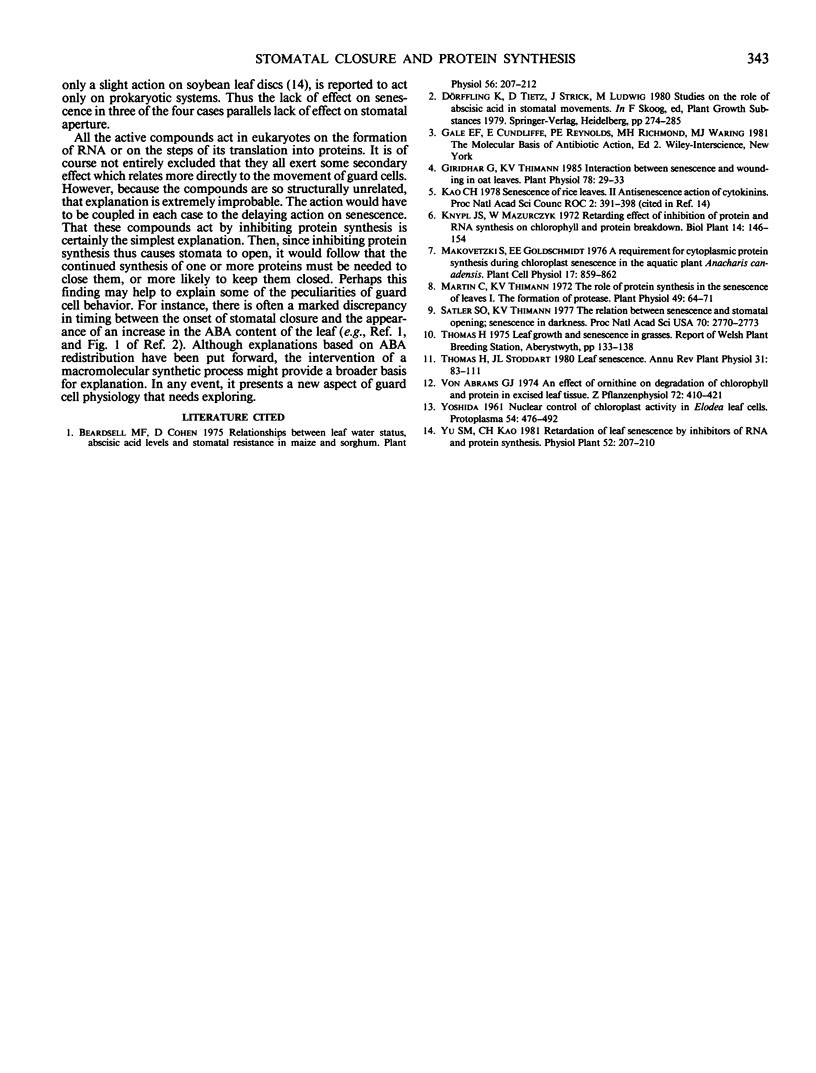Abstract
Seven different inhibitors of the synthesis of protein and RNA, all of which are found to delay the senescence of detached oat leaves in darkness, also cause the opening of the stomata in the dark. The concentration ranges for activity on the two processes agree closely. Four other compounds of similar effects on RNA and protein synthesis, but which are inactive on senescence, correspondingly fail to open the stomata. This not only strengthens the relationship between stomatal closure and senescence, but—more important—provides strong evidence that continued protein synthesis is necessary to keep foliar stomata closed.
Full text
PDF


Selected References
These references are in PubMed. This may not be the complete list of references from this article.
- Beardsell M. F., Cohen D. Relationships between Leaf Water Status, Abscisic Acid Levels, and Stomatal Resistance in Maize and Sorghum. Plant Physiol. 1975 Aug;56(2):207–212. doi: 10.1104/pp.56.2.207. [DOI] [PMC free article] [PubMed] [Google Scholar]
- Giridhar G., Thimann K. V. Interaction between Senescence and Wounding in Oat Leaves. Plant Physiol. 1985 May;78(1):29–33. doi: 10.1104/pp.78.1.29. [DOI] [PMC free article] [PubMed] [Google Scholar]
- Martin C., Thimann K. V. The role of protein synthesis in the senescence of leaves: I. The formation of protease. Plant Physiol. 1972 Jan;49(1):64–71. doi: 10.1104/pp.49.1.64. [DOI] [PMC free article] [PubMed] [Google Scholar]


